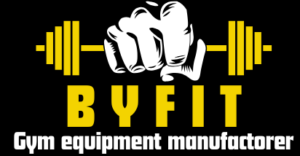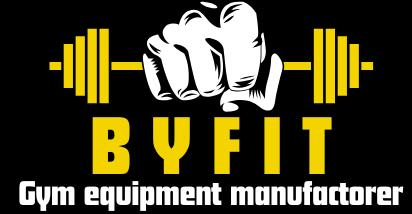Imagine your newly installed gym floor bubbling or peeling off just months after installation. Frustrating, isn’t it? This common issue can be avoided with the right approach.
To perfectly glue-down commercial gym rubber flooring, focus on advanced moisture mitigation, subfloor compatibility, and proper adhesive activation. Employ techniques like a two-step vapor barrier and rolling weights to maximize bonding, ensuring durability even in high-traffic areas.
](https://www.byfitgear.com/wp-content/uploads/2025/03/perfect-glue-down-installation-for-commercial-gym-.jpg) Perfect Glue-Down Installation for Commercial Gym Rubber Flooring
Perfect Glue-Down Installation for Commercial Gym Rubber Flooring
Proper installation goes beyond simply applying adhesive. Understanding the nuances can make the difference between a long-lasting floor and a costly mistake. Continue reading to unearth the hidden elements of a flawless gym flooring installation.
How Do I Order Rubber Gym Flooring Samples?
Just feeling the texture of a rubber flooring sample isn’t enough. You risk long-term issues by ignoring crucial performance metrics, leading to early wear and tear.
To make an informed decision, request detailed performance data like tear resistance1 and wear patterns2, along with a full installation kit sample3. This comprehensive approach helps to evaluate both the material’s durability and the entire system’s effectiveness.
](https://www.byfitgear.com/wp-content/uploads/2025/02/BYFIY.png) Order Rubber Gym Flooring Samples
Order Rubber Gym Flooring Samples
Many suppliers will send you a piece of flooring, but is that really enough? BYFIT believes in providing a more holistic view. Instead of only receiving a physical sample, ask for a complete installation kit. This kit should include different adhesive types, subfloor primers, and even the necessary installation tools4. Evaluating how all these parts fit will help you understand the process from start to finish.
How Can You Evaluate Sample Quality Beyond Physical Features?
Here’s how to break it down:
-
Request Performance Data5: Don’t just look at the sample; ask for data. Tear resistance, wear patterns, and slip resistance are all critical.
-
Full Installation Kit6: A sample kit should include adhesives, primers, and tools. This lets you test the entire system, not just the flooring.
| Evaluation Criteria | What to Ask For | Why It Matters |
|---|---|---|
| Physical Features | Texture, color, thickness | Aesthetics and initial feel |
| Performance Data | Tear resistance, wear patterns, slip resistance | Long-term durability and safety |
| Installation Components | Adhesive types, subfloor primers, installation tools | Understanding of the complete installation system |
How Can a Full Installation Kit Sample Help?
Instead of just requesting a simple floor sample, ask for a complete installation kit sample, which includes adhesive types, subfloor primers, and installation tools.
What Type of Adhesive Should I Use for Rubber Gym Flooring?
Choosing the wrong adhesive can be like using duct tape on a spaceship—it might hold for a bit, but it won’t last. Ignoring adhesive properties can lead to flooring failure in different climates.
For superior performance, consider hybrid adhesives7 that combine solvent-free and urethane properties. Prioritize low-VOC, high-performance urethane adhesives to balance durability with environmental compliance, perfect for commercial gym projects.
](https://www.byfitgear.com/wp-content/uploads/2025/03/41PpMe1fcL._AC_UF8941000_QL80_.jpg) Type of Adhesive
Type of Adhesive
It’s not enough to just grab any "solvent-free" adhesive off the shelf. The real secret is in hybrid adhesives.
Why Consider Hybrid Adhesives?
Consider hybrid adhesives. These products combine the strengths of solvent-free and urethane adhesives, offering superior moisture and temperature resistance8.
What are the benefits of Low-VOC Urethane?
Low-VOC, high-performance urethane adhesives are the best. Here is a little more information on the subject:
-
Hybrid Adhesives: Best for environments with fluctuating temperatures or high humidity, commonly found in gyms.
-
Low-VOC Urethane9: These offer durability while still meeting environmental safety standards.
| Adhesive Type | Pros | Cons | Best For |
|---|---|---|---|
| Solvent-Free | Eco-friendly, low odor | Less resistance to moisture and temperature variations | General use, low-traffic areas |
| Urethane | High durability, excellent bonding | May contain VOCs, stronger odor | High-traffic, heavy equipment areas |
| Hybrid (Solvent-Free & Urethane) | Combines benefits of both, superior moisture and temperature resistance, eco-friendlier | Slightly higher cost than basic solvent-free options, but cost effective | Fluctuating climates, high-humidity areas |
How Long Does It Take for the Adhesive to Dry?
Rushing the drying process can lead to a floor that shifts or lifts under heavy gym equipment, causing safety hazards and expensive repairs.
While 24-48 hours is commonly recommended, allow a full 72 hours for curing in high-traffic gym environments. Use temperature-controlled methods like forced-air drying to ensure a stronger bond, especially in areas with fluctuating temperatures.
](https://www.byfitgear.com/wp-content/uploads/2025/03/rushing-the-drying-process-can-lead-to-a-floor-tha-1.jpg) Adhesive to Dry
Adhesive to Dry
The standard drying time may not be enough.
Why is a 72-Hour Curing Period10 Recommended?
Think of it like baking a cake; if you take it out of the oven too soon, it collapses. Temperature control during the curing process is key.
-
72-Hour Rule: Give your adhesive the extra time to fully bond, minimizing the risk of damage.
-
Temperature Control11: If you’re in an area with high humidity or temperature swings, use climate-controlled methods.
How can temperature Control help?
-
Forced-Air Drying12: This method helps speed up curing while ensuring a stronger bond.
| Method | Standard Drying Time | Recommended Curing Time (High-Traffic) | Additional Notes |
|---|---|---|---|
| Regular Drying | 24-48 hours | 72 hours | Basic method, may vary with environmental conditions |
| Temperature-Controlled | Varies | Up to 72 hours | Forced-air drying, climate-controlled spaces |
| Forced-Air Drying | Reduced | Up to 72 hours | Ensures even curing, reduces time, enhances bond strength |
Conclusion
Mastering the art of gym rubber flooring installation involves more than basic steps. By focusing on moisture mitigation, adhesive compatibility, and extended curing times, you will achieve a durable and safe gym environment. BYFIT is here to help. Looking for expert advice? Contact BYFIT today! [email protected]
-
Understanding tear resistance is crucial for ensuring the longevity and durability of your flooring choice. Explore this link to learn more. ↩
-
Analyzing wear patterns can help predict the lifespan of your flooring. Discover insights on this topic to make a better decision. ↩
-
Knowing what to expect in an installation kit can save you time and ensure a proper setup. Check this resource for details. ↩
-
Discovering the right installation tools is crucial for achieving a professional finish in your flooring project. ↩
-
Understanding the significance of performance data can help you make informed decisions about flooring durability and safety. ↩
-
Exploring this resource will provide insights into the essential components of a complete flooring installation kit, ensuring a successful project. ↩
-
Explore the benefits of hybrid adhesives, which combine the best properties of solvent-free and urethane adhesives for superior performance. ↩
-
Discover how specific adhesives can enhance moisture and temperature resistance, crucial for gym flooring longevity. ↩
-
Learn about Low-VOC Urethane adhesives that offer durability and environmental safety, ideal for gym projects. ↩
-
Understanding the significance of a 72-hour curing period can help ensure a strong bond and prevent future issues. Explore this resource for detailed insights. ↩
-
Temperature control is crucial for effective adhesive curing. Discover how it impacts the bonding process and overall durability. ↩
-
Forced-air drying can significantly enhance the curing process. Learn more about its advantages and how to implement it effectively. ↩

](https://www.byfitgear.com/wp-content/uploads/2025/03/keep-rubber-gym-floors-from-moving-1.jpg)

